The Oldest Baptist Church in the State
“The oldest Baptist Church in the State” … that was the honour that was given to the Salem Baptist Church in Gumeracha, South Australia back in 1946, when the church celebrated it’s Centenary Anniversary.
And this weekend weekend the little church celebrated it’s 175th anniversary.
Before you all start commenting saying that the dates don’t match up, the beginnings of the church actually date back to 1843 when William Beavis Randell held church services in his barn at “Kenton Park”, Gumeracha. So it’s 175 years from this date.
Then in 1845 he donated land for the church, which was built and up-and-running by 1846.
Australia’s historical newspaper collection, Trove is once again a treasure of information and has a long report on their 100th Anniversary. You can read the full article here.
Not only that, we’re fortunate enough to have an original copy of the program from the 1946 anniversary service …
I have a lot of memories of relating to this church.
It’s where I went to church for many years. It’s where many family weddings were held, and it’s also were many family are buried.
I remember racing around the church (before the current hall was there), and falling over face-first in the mud in my “Sunday best” – my mum was not impressed! I remember the older ladies taking turns to bring flowers each week, and they always fretted about it. I remember the piles of fruit and veg stacked out front when it was Thanksgiving. I remember the Christmas concerts, and the special afternoon teas from time-to-time. I remember the regulars had ‘their seats’ at church, as well as their spots in the car park too.
But mostly I remember what a beautiful little church it was back then, and still is today – although I’m really not a fan of the new hall on the side. Because of where it is you can no longer see the 1846 date engraving on the church wall.
Do you have memories of the church? If so, feel free to leave a comment below.
Anyway I’m sure I’m not alone in being proud that my great great grandpa, William Beavis Randell played such an important role in it all.
Congratulations on 175 years Gumeracha Salem Baptist Church. Here’s to the next 175!!
RELATED POSTS:
William Beavis Randell: The Man Who Created a Town
Anecdotes, BDMs, Obits and Adverts – What Are These Records?
Trove Tuesday: “There’s Gold in Them Hills …”
The tiny town of Gumeracha in the Adelaide Hills is well known these days for being the home of the world’s biggest rocking horse, the annual medieval fair, and of course wines. But believe it not, at one stage, Gumeracha was well known for its goldfields.
Many who have connections to the area would have heard of Watts Gully Road at Forreston (previously North Gumeracha), this was one area where gold was, and was first found by James Watts back in 1884. Dead Horse Gully is near Watts Gully Road, and this was another of Gumeracha’s gold diggings areas.
For my Trove Tuesday post, I’ve found the following article which discusses the Dead Horse Gully goldfields … and for someone who didn’t know about them (yes me), I found it fasinating, so thought I’d share it with you. Note: old references to this place list is as Deadhorse Gully (two words), or even Dead-Horse Gully (with a hyphen), current day spelling is Dead Horse Gully (three words). For consistency, I’m using the three word version.
From the South Australian Register, dated Saturday 14 March 1885 …
THE GOLD FIND AT GUMERACHA.
During the last few days large number of men have arrived at Dead-Horse Gully on the gold rush. Now nearly 100 men are working in the gully around Mount Crawford. The rush was so great that on Thurs-day Hill & Co. put on a special coach from Adelaide. The rush is at Mount Crawford, about seven miles north-east of Gumeracha. To get at the field it is necessary to turn off the main road at North Gumeracha-road and to go right through that township. For the first three miles there is a good district road, but after that there is merely a vehicle track through the scrub and rough hilly ground. Deadhorse Gully is about a mile and a half long, and is thickly wooded with colonial honeysuckle. On entering the gully several holes where trials have been made are noticeable. These are in some cases three or four feet deep; in other cases even more. Right along the gully a large number of claims, about fifty, are being worked. These are of various depths. One or two men have gone to a depth of 18 feet before bottoming. The soil is gravelly and patched with black sand in nearly all the claims. In this soil gold is found in a great many cases.The gully runs due east and west, and the whole length has been pegged out. In some cases the men say that they have got payable gold, while others have got simply the colour. One man, who has been working in the gully for three years with his mate, kept the matter quiet, but every fortnight he used to take £8 or £9 worth of gold into Gumeracha. He has been very successful, and has a nugget in his possession weighing 3 oz. Other men have done very well. One showed several nice nuggets weighing under an ounce. He had got all the gold from coarse rough surface. The average depth of the claims before striking the drift is about ten feet. Of course, gold is got at a less depth than that in some places. One man only went four feet before he came on stuff which, when panned, yielded several specks. Some men who have been up several days have been unsuccessful and have cleared out, but their places were quickly filled. Several men are on the road tramping it to the gully. It is considered that there is gold in the drift from the reef on the hill on the north side of the gully. Experienced miners on the ground agree that all the gullies in the vicinity contain gold, and that several abound with gold to quite as great an extent as this. Two or three men have marked out claims in other gullies.
Cabs, carts, drays, wagons, and vehicles of all descriptions are on the ground. There are a number of tents for the men to sleep in, but others are content to lie under trees or to sleep in carts. There are men of all occupations amongst those present — old miners, clerks, cabmen, labourers, several boys, and sailors.
At the East-End Gully there is an indication of a good reef. Some quartz picked, up on the surface showed copper, gold, and pyrites. The great difficulty to contend with in working claims is water. When the men get down ten feet or so water from the hills soaks through this, and has caused the abandonment of one or two claims. Provisions for the camp are brought round by the storekeepers of Gumeracha, but a store in a galvanized-iron structure of about twelve feet by nine is to be opened on Saturday.
On Thursday the Warden of the Goldfields visited the ground, and considers that there is good gold in the gully, but not enough of the mineral for the hundred men who are now on the spot. The whole bottom of the valley has been pegged out. Mr. Hack says that the gullies on either side of this one have gold, and advises the men to spread out. If they do this there is very little doubt but that the industry will get a good start, as the surface is good – so good that he believes that the reefs, of which there are several in the hills around and about, must be very rich.
The samples of ore found are of what is known as burnt ore. It would be very foolish for any more men to go on at present to the gully, as all the likely ground is holed, but the other gullies, to which provisions could be taken daily, offer a good field for prospecting.
Owing to the crude character of the utensils some gold has probably been lost. If the reef is fallen in with at these claims the men will be unable to crush the stone, but none appear anxious to do other than sink surface claims. During the day a large number of visitors go over the ground. The best find so far was a nugget weighing 3 oz.
Fascinating isn’t it, though I still find it hard to envisage just what it was like back then. You can find the whole original article on Trove here.
So there’s just one more little piece of a small town’s amazing history for you.
For those who are not familiar with the term Trove Tuesday, it is a popular theme within the Australian genealogy blogging community, as we browse the Trove website (Australia’s old newspapers that are online AND FREE), find an article that interests us, and write about it … usually on a Tuesday. You can find all of my past Trove Tuesday posts here.
“Dear Friends” … Letter From an Emigrant in 1864
So what was life like for those who emigrated to South Australia back in the 1800s? Generally you’re only likely to find this information from letters written to family or friends in the ‘old country’, or otherwise from diaries. So it was a surprise to find an article on Trove about an emigrant who not only came to South Australia, but actually settled in the tiny town of Gumeraka (note the alternate spelling of Gumeracha).
Written in 1864 to some friends in England (or maybe Wales), it was produced as an article the Scotts Circular (Newport, Wales), and then in The Adelaide Express, 22 April 1865 (as reproduced below). The writer details what it was like for him and his family with housing food, work and wages, neighbours and other businesses all getting a mention. What we don’t know is who the author of the letter is. Still, it makes for an interesting read.
In 1864 the town of Gumeracha was not very old, having only been laid out in the 1850s (for more on that click here).
The article starts off with “The following interesting letter has arrived from an emigrant who received a passage under Government, to South Australia.”——————————
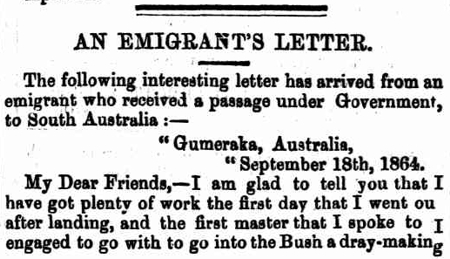
An Emigrant’s Letter, Adelaide Express, 22 April 1865 http://nla.gov.au/nla.news-article207600900
The text below is a full transcript of the article. Note the paragraphs have been added in by me to make it easier to read.
AN EMIGRANT’S LETTER.
Gumeraka, Australia,
September 18th, 1864.
My Dear Friends, I am glad to tell you that I have got plenty of work the first day that I went on after landing, and the first master that I spoke to I engaged to go with to go into the Bush a dray-making and waggon-making at the wheelwrighting trade, at the rate of wages I will give you, and you can see whether it is as good as in England. I think there is a better chance for a working man to get on here; the wages that I am going to have is, with lodgings, that is a hut and firewood as much as I like to burn, and all my food, and I have meat every meal, and eggs and tea every meal, and pudding every day, and £1 10s. per week, if that is not; good send and let me know of it; that was the first chance that I had.
I think it as good as £2 10s per week, and my wife have a good many things gave her, and the children get plenty to eat at the farm which we live close to.
Our hut have got canvas windows instead of glass, but they do out here as there is not many people to see out here, only at the farm house. They keep a blacksmith’s shop and a wheelwright’s shop, but it is about a mile from the farm, and they send our meals down to us; there is another wheelwright that married the daughter which live at the farm; their house is like a cow-shed-in England, but they got plenty of money, they are Scotch people; and they are good people to work with, and my wife and children are quite well and myself in good health.
We can live as cheap as we could in England, and butter is 8d. per pound; beef, 2 1/2d. to 3d.; mutton, 2d. to 4d. per pound; sugar, 4d.; tea, 2s. 6d. to 3s.; bread now is rather dear Is. a gallon (?) ; beer, 10d. per quart and 1s.
There is plenty of work out here if people will but come out to try. If any body will come out I will go and meet them, and keep them till they can get work, or I will ‘try and see if I could get them a place, but there is nobody out of work here; cloth is about the same as in England.
Please to read this to all of the shop, and tell them that I am very much obliged to them for what they done for me when I were at home, but if I can do anything for any of them in any way, I will do it with the greatest pleasure of doing it to any of my old shopmates; please to tell them all to write to me, and I will write to them in return, and please to send me some newspapers, and I will send they some.—Scotts Circular, (Newport, Wales.)
So there you have it. That’s what life was like in Gumeracha back in 1864, and no doubt similar in other country towns, taken from a firsthand account.
Homeopathy and the Treasures Between the Pages!
Homeopathy: “The study of natural therapy which stimulates the body’s immune system to restore health”. It was something that my great grandpa, J.B. Randell taught himself.
Ever looked through an old book and found something slotted in the pages in between? I have. Regularly. I’ve mentioned before that my mum’s side of the family weren’t one’s to throw things out. Putting it nicely “hoarders”, and for that I’m eternally grateful, as it has meant that we have SO MANY family heirlooms dating back generations, it’s truly amazing.
One thing that seems to have been a ‘thing’ that’s been passed down through the generations of Randell’s, was the habit of putting things in the middle of books. I’ve always known my grandma to do that, and have often discovered random newspaper cuttings, birthday cards, flattened Easter egg wrappers and more in the pages of books of hers. Now this book of her fathers, John Beavis “JB” Randell (to my surprise) has even more bits filed in between the pages.
I found a total of 25 items in amongst the pages of the book, and I have scanned each one of them, and that’s what I wanted to share with you today. Some are interesting, others not. But from there there are clues which could lead to further research …
[espro-slider id=9875]
As you will see there’s a collection of all sorts, from receipts, to newspaper cuttings, to bible verses, envelopes, hair, leaves, a bookmark and other printed items. I’ve noted them below, as the caption on the slider was so tiny it wasn’t readable.
1. Gumeracha Town Hall Concert, 9 August 1924
2. Receipt from Norsworthy’s store, Gumeracha, dated 9 September 1924
3. Dried leaves
4. Hair or fur
5. More dried leaves
6. front of homeopathic remedies brochure
7. advert for Nurse Grace’s ointment
8. Receipt of the sale of rabbit skins by Restyn Randell, dated 2 May 1922
9a. Front of bible verse card for Restyn Randell
9b. Back of bible verse card for Restyn Randell
10. advert for Dr Ricords Interesting Book for Men
11. “Forget Me Not” bookmark
12. Coats crochet cotton wrapper
13a. Front of Pulteney Street parking station ticket
13b. Back of Pulteney Street parking station ticket
14. British and Foreign Bible Society, Gumeracha, 15 September 1918
15. Journal of Department of Agricultre, Victoria addressed to J.B. Randell
16. Good citizenship leaftet, dated 11 February 1925
17. Envelope addressed to J.B. Randell, Kenton Park, Gumeracha
18. Birks Pharmacy letter
19. Handwritten notes
20. Postage paid envelope
21. ‘By Grace Ye Are Saved’ card
22. Readers Digest letter to D.A. Randell
23. Tag with list written on it
24a. front of Fruitgrowers Association of Gumeracha envelope
24b. back of Fruitegrowers Association of Gumeracha envelope
25. Receipt from Norsworthy’s Store, Gumeracha, for J.B. Randell dated November 1942
Now excuse me while I head off to the bookshelf, and start paging through more old books, to see what else I can find.

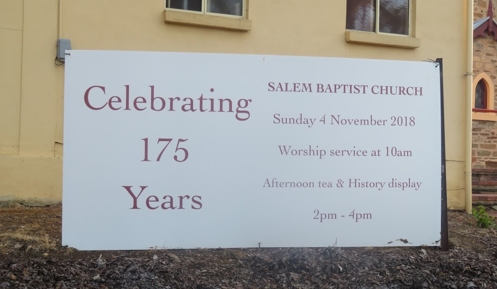
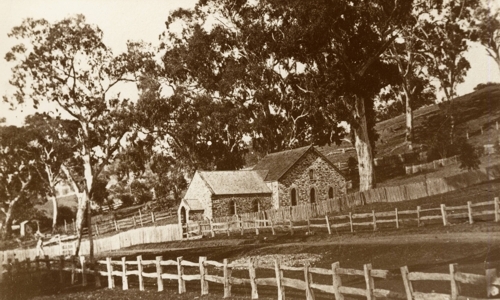
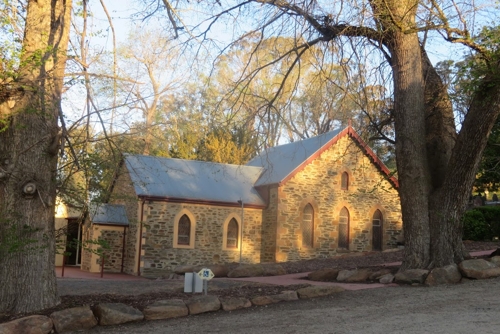
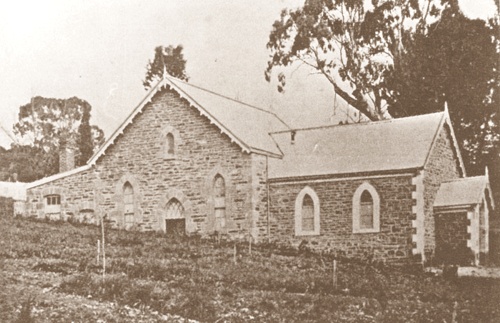
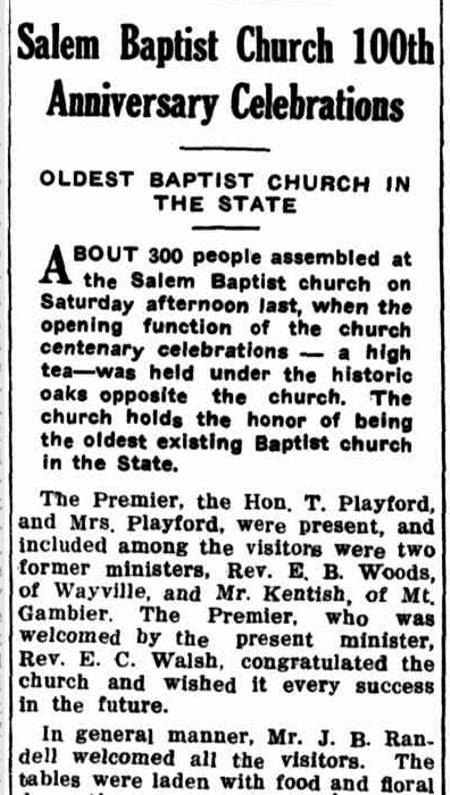
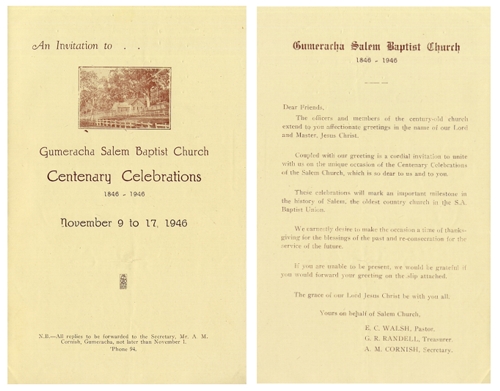
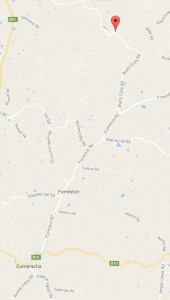
![earliest known photo of Gumeracha, taken c1870 [click for a larger image]](http://www.lonetester.com/wp-content/uploads/2017/03/Earliest-photo-of-Gumeracha-1870s-300x179.jpg)



